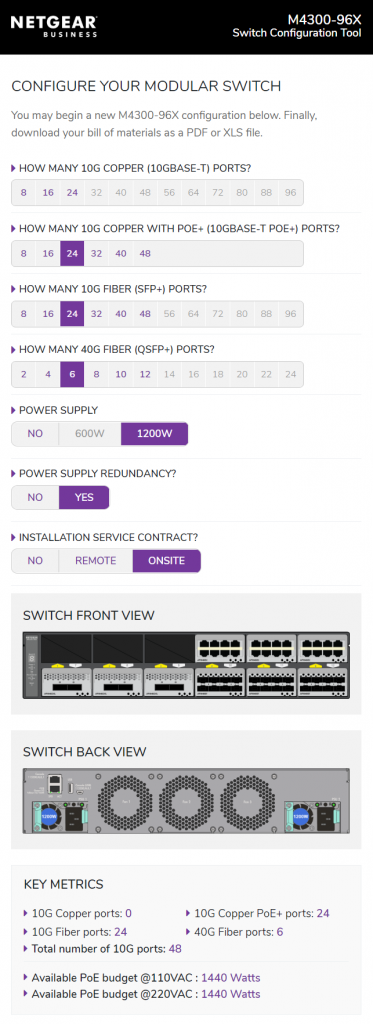What can SDVoE Learn from the Matrix Switch?
AV professionals have relied on the matrix switch for over 90 years – since television was invented. In that time, the matrix switch has evolved advanced and useful features above and beyond mere source switching. SDVoE is transforming the matrix by taking the best features from the modern pro AV matrix switch and applying them to the Ethernet switch.
Quality first
The key attribute of the matrix switch is its ability to deliver images and sound with minimal impact to quality. In the days of analog, this meant trying to represent the signal as well as possible, recognizing that some degradation was unavoidable. Those analog systems also featured the best latency performance possible. The only delay was the time required for signals to traverse the long cables.
When the digital revolution came to the AV matrix switch 10 years ago, it became possible for signal to be delivered truly flawlessly – without loss. Latency performance changed, but not in a meaningful way. These digital systems do have some internal pipelines and buffers that delay the signal by microseconds (1/1000 of a millisecond). These delays are real, but totally meaningless and imperceptible to human viewers.
This flawless performance – in image quality and latency – is today’s benchmark for any signal distribution system. If SDVoE has learned anything from the matrix switch it is this: signal distribution performance must not be compromised. This is why SDVoE takes advantage of 10G Ethernet to deliver images with the same image quality and latency as the best matrix switch.
Maintaining control
In a pro AV environment, it’s rarely sufficient to merely move AV signals from one place to another. What good is flawless image delivery if the TV is powered off? The best matrix switches built around HDBaseT and other technologies include provisions to deliver control signals such as RS-232, CEC, and infrared along with the AV signals. This makes it possible to extend the reach of your control system, turning on a display and selecting the right input, or sending transport commands to a source device when needed.
Often, the matrix switch provides a simple extension path from switch to endpoint. You connect an RS-232 cable from a control processor to the matrix, and that signal will be delivered as-is to a specific endpoint device. SDVoE adds simplicity and flexibility to this. All communication with an SDVoE endpoint (encoder or decoder) happens through the SDVoE API via Ethernet. So instead of connecting a rats’ nest of RS-232 cables between control processor and your switch, the control processor merely sends an API command. The specified endpoint receives the command and communicates the control processor’s message via its RS-232 port. The same approach is available for CEC and infrared control.
Don’t forget audio
Systems can become complicated when the application demands the presentation of video from one source and audio from a different source. The most sophisticated matrix switches have evolved the capability to deliver audio separately from video. Usually this feature is called “breakaway audio routing.” In a matrix switch, this requires significant extra hardware complexity and cost. In fact, it requires two independent matrices – one for audio and one for video. These two switches live together inside the same metal box, so you just think that you only bought one matrix. In fact you bought (and paid for) two. Extra electronics recombine the audio and video signals output from these two switches. The experience is mostly seamless, but the cost is high.
SDVoE has an architectural advantage. To the Ethernet network, data is just data. Ethernet doesn’t care if it’s carrying audio, or video, or a copy of your latest Harry Potter meets Star Trek fan fiction novel. SDVoE treats audio and video signals as two separate streams. Therefore, to implement breakaway audio routing, a receiver merely subscribes to video from source A and audio from source B – in exactly the same way it would subscribe to audio and video from a single source. Breakaway audio routing is simple in an SDVoE environment, and adds zero cost or complexity to the hardware. (More detail about this subscription model of AV routing are available in the free SDVoE Design Partner Certification training.)
Modularity is flexibility

Today’s pro AV designer expects a matrix switch to have a variety of I/O cards available to plug into a modular chassis. Although the switch chassis itself is an inflexible pre-set and usually ‘square’ configuration (e.g., 32 in x 32 out), the chassis could be filled with a mix of HDMI, HDBaseT, and proprietary fiber optic ins and outs.
The benefits of such a design are obvious. It is easy to mix and match the precise connectivity that the application requires. A system is more easily expanded, without a requirement to buy all the gear up front.
In 2018, NETGEAR released the M4300-96X modular Ethernet switch, a first of its kind. Inspired by the pro AV matrix switch, NETGEAR provides modules supporting several different Ethernet modes:
- 10GBaseT (copper) x8
- 10GBaseT with PoE+ x8
- 10G SFP+ fiber (compatible with single- or multi-mode optics) x8
- 40G QSFP+ fiber x2
Inspired by the tools used to design matrix switch systems, NETGEAR also created an online configuration tool for the 96X. This tool makes it easy and fast to generate a bill of materials customized to your system needs.
World’s first AV/IT hybrid
In 2019, ZeeVee announced the availability of a new input module for the 96X – a module that eschews Ethernet connectivity altogether, and instead adds HDMI connectors directly into the Ethernet switch. This eliminates the need for extra encoders, decoders, switch ports, cabling, and wall warts inside the rack, and makes an SDVoE matrix the perfect replacement for a traditional matrix switch.
This transformed matrix switch is small, too. The 96X allows up to 96 ports, with a mix of HDMI, 10G, and 40G connectivity, in 2 RU. Typical 32×32 matrix switches are five times that size, or bigger.
Final thoughts
The matrix switch has much to teach us about signal management. Image quality is king. Latency matters. Flexible routing is a requirement – audio, video, as well as control. And designers as well as owners appreciate the ability to specify a switch that meets their specific needs today, while maintaining an upgrade possibility for the future.
SDVoE has taken all these lessons from the history of the matrix and delivered them on the platform of the future – Ethernet. SDVoE is the matrix transformed.


